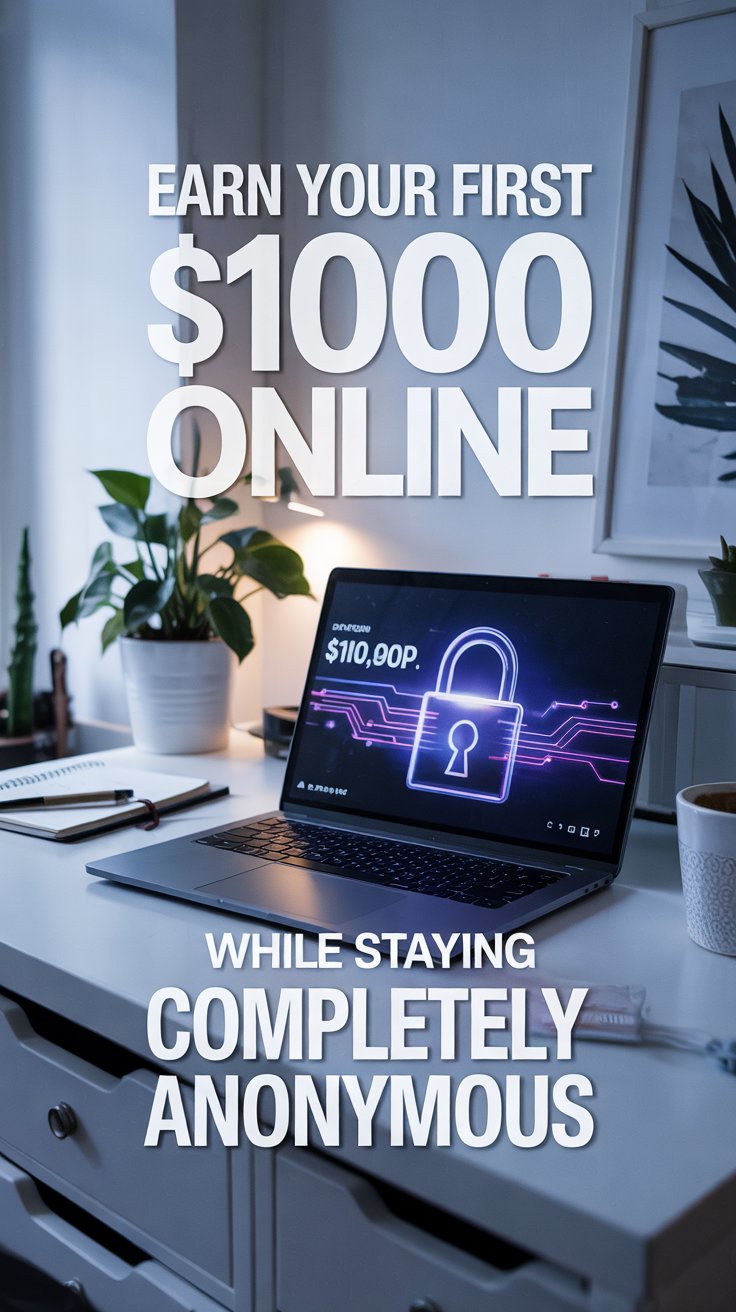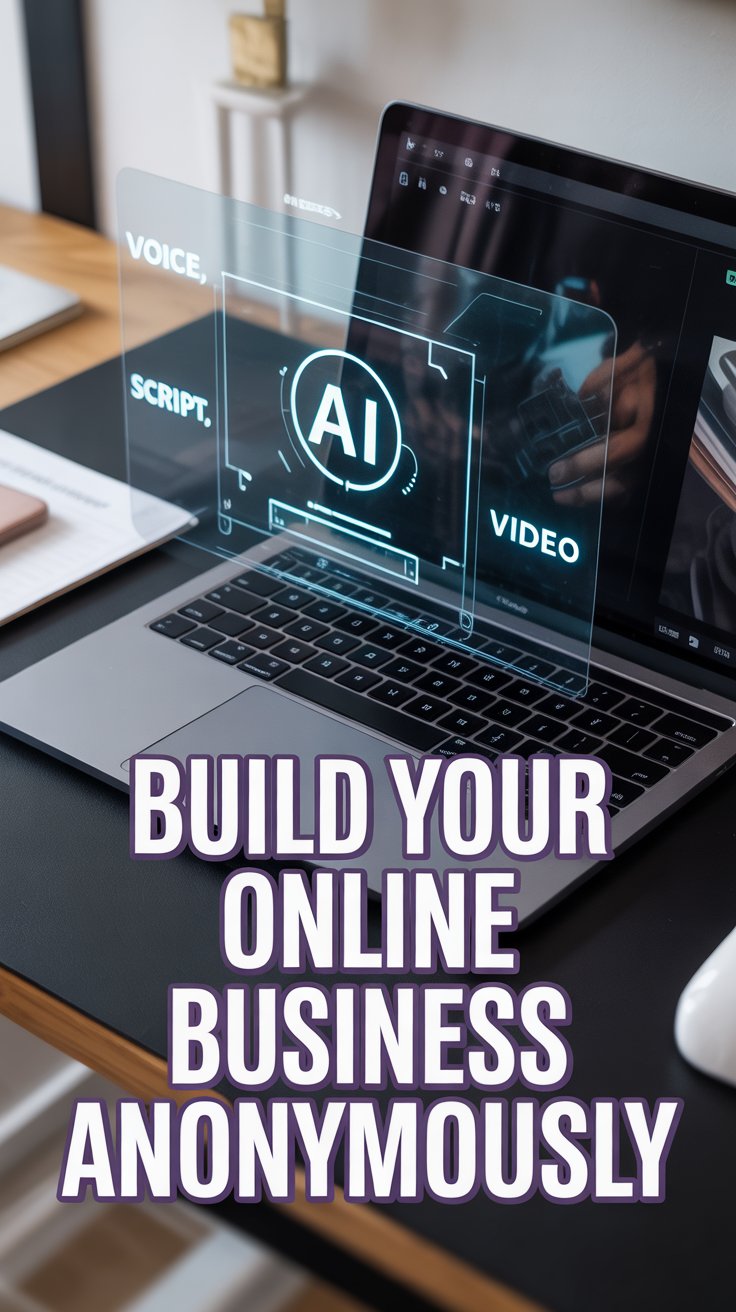Ever scroll through YouTube or TikTok and think, “I could totally do that… if I didn’t have to plaster my face all over the internet?” I get it. The idea of becoming a “public figure” is daunting, and frankly, not for everyone. You want to create, you want to build something, and yeah, you want to make some money from it—but you also value your privacy.
Well, what if I told you that some of the most successful and profitable channels out there are run by creators you’d never recognize on the street? It’s not just possible; it’s a massive, thriving corner of the internet. You can build an entire digital empire from the comfort of your home, in your pajamas, without ever having to worry about what your hair looks like.
Let’s walk through exactly how you can join the faceless creator revolution.
First, Let’s Get One Thing Straight: Why Go Faceless?
Before we get into the “how,” let’s talk about the “why.” Choosing to be a faceless creator isn’t just about being camera-shy. It’s a strategic decision with some serious perks. For starters, you maintain 100% of your privacy. No one recognizes you at the grocery store or slides into your DMs with weird comments about your last video. It’s a beautiful thing.
This approach also makes your content incredibly scalable. You can hire voice actors, scriptwriters, or editors to help you produce content, and your audience will never know the difference. Your brand is the content itself, not your personality. This separation allows you to focus purely on quality and quantity without burning out. IMO, it’s a much more sustainable business model for the long run.
Niche Selection: Your Golden Ticket to Success
Okay, this is probably the most important step, so don’t just skim it. Your niche determines everything: your audience, your content style, and your monetization potential. Picking the wrong niche is like trying to sell ice to someone in Antarctica. It’s just not going to work.
High-Value Niches That Don’t Need a Face
Some niches are practically made for faceless creators. They are built around information, entertainment, or atmosphere—not a person. Here are a few ideas to get your gears turning:
- Meditation & Relaxation: Think rain sounds, guided meditations, or calming music over beautiful stock footage. Your voice (or a hired voice actor’s) is the star.
- Gaming: You don’t need a facecam to be a great gamer. Channels that focus on incredible gameplay, funny moments (edited together), or detailed walkthroughs are hugely popular.
- Tech & Software Tutorials: People just want to see the screen. You can guide them through complex software like Photoshop, Excel, or a coding language with simple screen recordings and a clear voiceover.
- History & Documentary-Style Content: Use stock footage, historical images, and animations to tell compelling stories. Think of channels like LEMMiNO or infographics-style explainers.
- Finance & Crypto Explainers: Animate charts and graphs to explain complex financial topics. People are here for the data, not your face.
- “Top 10” Listicles: This is a classic for a reason. “Top 10 Scariest Movies” or “Top 10 Strangest Discoveries” can be made entirely with stock clips, images, and a compelling voiceover.
How to Pick Your Niche
So, how do you choose? I always advise finding the sweet spot between what you’re passionate about and what’s profitable. If you have zero interest in finance, don’t start a finance channel, no matter how much money you think you’ll make. You’ll burn out in a month.
Conversely, a channel dedicated to the history of paperclips might be your passion, but the audience (and income potential) might be a bit… limited. Find a topic you can talk about for hours, do some research to confirm people are actually searching for it, and you’ve found your goldmine.
Content Creation: Your Faceless Arsenal
You’ve got your niche. Now, how do you actually make the videos without pointing a camera at yourself? You have a few fantastic options, each with its own workflow and tools. You don’t need a Hollywood studio; you just need a laptop and a bit of creativity.
The “Screen Record and Voiceover” Method
This is the bread and butter for tutorials, gaming, and reaction-style content (reacting to articles, websites, etc.). You simply record your screen while you perform a task and then record your voice over it, explaining what you’re doing.
- Best For: Tech tutorials, software guides, gaming walkthroughs, educational content.
- Key Tools: OBS Studio (free and powerful), Loom (great for quick recordings), or Camtasia (paid, but with a built-in editor).
The “Stock Footage and AI Voice” Method
This is perfect for storytelling, listicles, and documentary-style videos. You write a script, then gather high-quality stock video clips and images to match your narration. The visuals keep the audience engaged while your voice tells the story.
You can use your own voice or, if you really want to be hands-off, use a hyper-realistic AI voice. Just be careful—pick a good one. Nobody wants to listen to a bored GPS for ten minutes.
- Best For: History, psychology, mystery, finance, and motivational channels.
- Key Tools: Pexels & Pixabay (free stock footage), Storyblocks (paid subscription with a massive library), ElevenLabs or Murf.ai (for top-tier AI voices).
The “Whiteboard Animation” Method
Ever seen those videos where a hand draws animations on a whiteboard to explain a concept? They are incredibly engaging for educational content because they simplify complex ideas visually.
- Best For: Complex explainers, educational content, book summaries.
- Key Tools: Doodly, VideoScribe. These tools have a bit of a learning curve but are super effective once you get the hang of them.
The real magic happens when you master the right AI prompts to automate your content creation. While this takes time to learn through trial and error, you can dramatically speed up your progress by using a proven framework, like the ‘copy-and-paste’ F.I.R. formula taught inside the AI Marketers Club, which simplifies the entire workflow.
The Not-So-Secret Sauce: Scripting and Audio
Listen up, because this is crucial. When your face isn’t on screen, your voice and your story are everything. You could have the most stunning visuals in the world, but if your audio is terrible or your script is boring, people will click away instantly.
Writing Scripts That Hook
Your script needs to grab the viewer in the first 15 seconds. I always use a simple formula:
- The Hook: Start with a shocking statement, a relatable problem, or an intriguing question.
- The Body: Deliver on your promise. Give the information, tell the story, and keep the energy up. Use simple language. Read your script out loud to catch awkward phrasing. If it sounds robotic when you say it, it will sound robotic in the video.
- The Call to Action (CTA): Tell people what to do next. “Subscribe for more,” “Check out the link in the description,” or “Let me know your thoughts in the comments.”
Your Voice is Your Brand
You don’t need a buttery-smooth radio voice, but you do need clear audio. That means getting a decent microphone. Please, for the love of all that is good, do not use your laptop’s built-in mic. It sounds like you’re recording from inside a tin can.
- Good Starter Mics: Blue Yeti, Rode NT-USB. These are USB mics that are plug-and-play and offer fantastic quality for the price.
- Audio Editing: Use a free program like Audacity to remove background noise, cut out mistakes, and make your voice sound crisp and professional.
The key to success on these platforms is consistency, which can be hard to maintain when you’re juggling ideas, scripts, and editing. Having a streamlined system is crucial to avoid burnout, and for those looking for a proven shortcut, John Crestani’s AI Marketers Club teaches a simple 7-minute formula to systemize this entire process.
Monetization: Turning Views into Cash
Alright, let’s talk about the fun part: getting paid. You’ve picked a niche, you’re creating awesome content, and people are starting to watch. How do you turn those views into actual money?
The Obvious Ones: Ad Revenue and Affiliate Marketing
These are the two most common starting points.
- Ad Revenue: On YouTube, you can join the YouTube Partner Program (YPP) once you hit 1,000 subscribers and 4,000 hours of watch time. On TikTok, it’s the Creator Fund. Once you’re in, the platform will place ads on your videos, and you’ll get a cut of the revenue. It’s passive income at its finest.
- Affiliate Marketing: This is my personal favorite. You recommend products or services you love and use, and when someone makes a purchase through your unique link, you get a commission. For a tech tutorial channel, this could be the software you’re teaching. For a gaming channel, it could be the headset you use. It’s a win-win: your audience gets a great recommendation, and you get paid.
The Creative Hustles: Digital Products and Sponsorships
Once you’ve built an audience, you can create your own products. This could be an eBook with meditation scripts, a set of video editing presets, or a simple guide to stock market basics. You own the product, so you keep 100% of the profit.
Sponsorships are when brands pay you to feature their product in your video. And no, you don’t need millions of subscribers for this. Brands love sponsoring faceless channels in targeted niches because the audience is highly engaged and interested in that specific topic. A channel with 10,000 die-hard finance bros is more valuable to a trading platform than a general vlogger with 100,000 casual viewers.
Putting all these pieces together—finding the right niche, creating the content, and monetizing it effectively—can be the most challenging part, especially if you’re starting from scratch. Fortunately, getting a complete step-by-step guide is more accessible than ever; for just $27, the AI Marketers Club provides a perfect starting point for beginners.
Your Turn to Create
So there you have it. You don’t need to be a charismatic, camera-ready influencer to build a successful and profitable channel. You just need a good idea, a solid strategy, a decent microphone, and the willingness to hit “publish.”
The barrier to entry has never been lower, and the potential has never been higher. The internet is hungry for valuable, entertaining, and informative content—and it honestly doesn’t care if it sees your face or not. So what are you waiting for? Go build your faceless empire. 🙂



